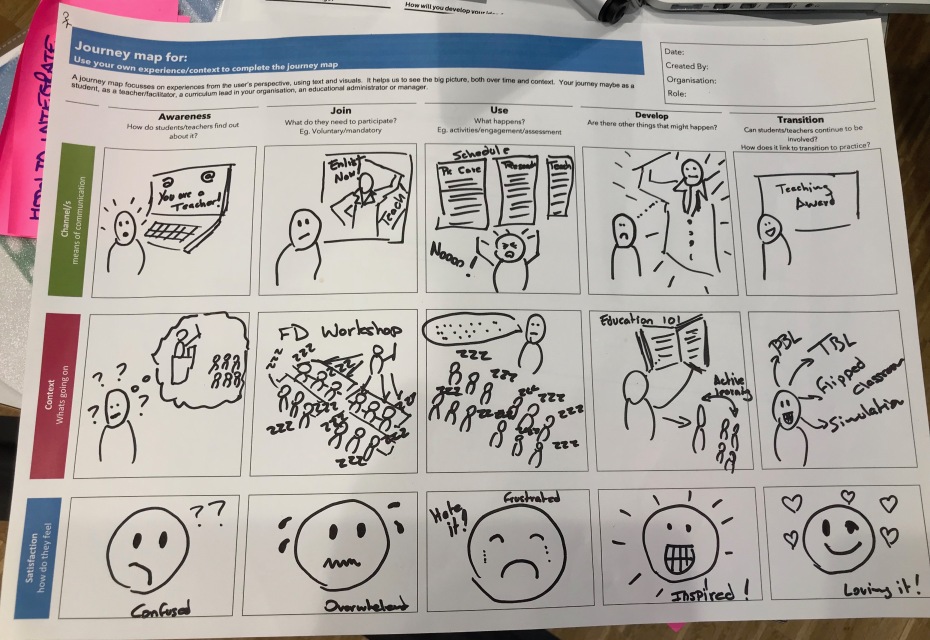Having defined the problems and challenges to work on, the next step is to frame the challenge and discover more about it. In this stage your group can start to think about who are the key stakeholders affected by and involved in the problem, what resources are available, what research or user data might tell you about the situation. You can also consider whether there are time constraints that might apply and how you might address any gaps in knowledge and understanding. To help with this process of discovery we will use a Policy Canvas template that we’ve taken from the UK Policy Lab Open Policy DIY Toolkit. Its just one approach that can help a group to brainstorm the scope of a challenge.
Key to developing solutions to your problem is understanding the experience of key users and stakeholders. One way to gain insights into this experience is to use journey mapping, it helps provide insights into personal experiences over time. In an educational context this could include perspectives from faculty, management, clinical teachers, learning and teaching administrators, students and patients. This process of journey mapping ensures that the problem and challenge are considered from different view points and lived experiences and helps to develop empathy as you look to start designing human-centred solutions to your problem. In the workshop we adapted a journey map developed by Open Change, a design group in Dundee who have worked extensively in the public sector and in healthcare. You can download the template from the Open Change website.
In the workshop Daniel Salcedo shared his journey map outlining his journey with teaching in his medical school. As we discussed in the workshop individuals can find it challenging to sketch out their journey maps. Drawing can take us out of our comfort zones, yet sketching can communicate the experience in a very powerful and evocative way. Where you have various stakeholders representing different levels of an organisational hierarchy, everyone sketching can help to flatten that structure, it’s also important to consider that in some cultures visual communication is commonly used. You can view and download Daniel’s map from the link below.

Next – Generating Ideas
Image credit – Photo by Cristofer Jeschke on Unsplash